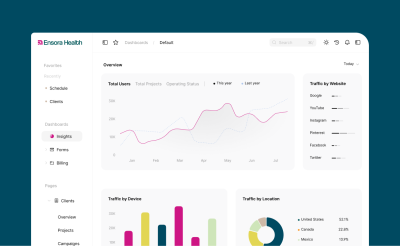How to raise your rates

After much internal struggle, you’ve decided that it’s time to raise your rates. You’ve wanted to do it for some time now, but didn’t push ahead for fear of the backlash.
What will your clients say? Will they all abandon your practice for the cheaper therapist across town? Are you being greedy and asking too much? How will you justify the higher rates—especially to your long-time clients?
Finally figuring out your fee schedule was hard, but raising those fees is even harder.
No doubt, you have questions about raising your rates. Fortunately, the path that you’re on is well traveled and there are signposts to help you along the way. Let’s walk through how to raise your rates without inadvertently alienating your clients.
Why you should raise your rates
Before we delve into the “how,” let’s discuss the “why.” In case you’re struggling with the decision to raise rates, let this serve as a gentle reminder about why it’s needed in the first place.
Reason #1: You simply cannot afford to not raise your rates. Thanks to inflation, the price of living is steadily rising and the value of the dollar is steadily decreasing. A dollar today represents a lot less than it did 20 years ago. You need more money to maintain your practice and your personal life.
Reason #2: You cannot take care of your clients if your own needs aren’t met. Sure, you can sacrifice certain luxuries, but eventually, you’ll end up negotiating your needs too. Plus, constant worry about how you’ll pay the bills will impact the quality of care you can render to your clients. It’s a horrible feeling and one that you can avoid.
Reason #3: More money often means less work. By raising your rates, you’ll likely be able to raise the quality of your services. When you’re charging more, you won’t have to take on as many clients. Yes, your rate increase means that you may lose clients, but it also means that you’ll get more from your new or existing clients.
Let’s say that you currently have 50 clients paying you $100 per session. You earn $5,000 each month. When you raise your rate, you lose five clients, but the 45 that you keep are now paying $125 per session. You’re earning $5,625 per month for less work.
Raising your rates is not only something that you must do, it’s also something that you must do regularly. By ensuring that you’re paid fairly, you’ll also guarantee the health of your practice.
Start by tackling your own guilt
Once you’re committed to raising your rates, you’ll still need to tackle one last monster: guilt.
Inevitably, you’ll be confronted by the thought that you got into mental health to help people and not to get rich.
While that’s true, it’s also true that you have to eat. You deserve remuneration for the quality of service and care that you provide. Another truth: You’re not running a charity. As a private practitioner, you’re also running a small business. You must pay for electricity, technology, staff, office space, and so on.
Raising your rates is also likely to uncover how you truly feel about yourself as a therapist and private practitioner. Before you can feel good about your rate increase, you’ll need to raise your own level of self-confidence.
Be worth the rate hike
To bolster your self-confidence and justify your rate increase, answer this question:
How are you currently improving your quality of service or care?
There’s no “one size fits all” answer here. Perhaps you’ve invested in new office equipment or technology. Maybe you’ve continued your education or you regularly attend mental health summits, seminars, and symposiums. There are various ways for you to improve yourself as a clinician and justify your rate increase.
Investing in yourself and your practice will prove that you’re worthy of increasing your rates, especially if you continue to do so.
Be willing to market yourself
Improving yourself and your practice is one thing, but if you don’t share your efforts with your clients, they may not know how much of your own time and resources you’re investing. You’ll need to show your client that you’re qualified for this rate increase.
Perhaps you’ve earned a new degree or certification. Celebrate it and inform your clients of it.
Or, maybe you offer a unique service that no one else offers in your city (i.e. opened on weekends, you speak another language). Make clients aware of this unique offering.
Remember that you’re great at what you do. You help people. You have a proven track record. You invest your time and money. And this is your life’s work. Don’t be afraid to let your clients know, with confidence, that you’re worth what you’re asking.
Raise in slow but steady increments
A big mistake that many therapists make is to raise rates inconsistently. Some therapists simply put off a rate increase until they can’t manage any further and then eventually raise their rates.
This is a problem, because the rate hike is usually uncomfortable for the clients. A client who may be accustomed to paying $60 now must pay $100—that’s quite a big jump and one that most clients are unwilling or unable to make.
As the wise old fable reminds us, slow and steady wins the race. Instead of raising your fees all in one fell swoop, considering increasing your fees gradually over time. For example, every year, raise your rates $5 or $10. You’ll maintain more of your clients that way, and it won’t feel as jarring as it would if you did a $40 increase all at one time.
Start with your new clients
Sometimes, the thought of losing long-standing clients can be too much to ask. Instead of enforcing a blanket raise for all of your clients, you can just charge new clients the higher rate.
Another option is to immediately start charging the higher rate to your new clients, and then give your current (older) clients an extended period before you raise their rates (i.e., six months).
Have the talk
You’ll need to inform your clients about your rate increase. As a therapist, the best way to do this is face-to-face. You’ve already fostered this sort of relationship with your client, so it would be awkward if you only notified via mail and didn’t bring it up in person.
Plus, bringing it up in person gives your client the option to discuss the raise with you. This can provide a powerful opportunity for you to connect with your client and reassure them of the motivations behind your fee increase. You may or may not choose to explain the purpose behind your rate increase, but most adults are reasonable enough to understand the need for one.
Also in this interaction, let the client know that you’ll send them a formal notification in the mail (or via email).
Put it in writing
Verbal notification alone is not enough. You’ll also need to provide written notification of your rate increase to your current clients—either via email or a mailed letter. Clients forget. Clients may not be listening. However, when you send a written notification, it’s pretty hard to ignore it.
In your message, reiterate what you’ve shared in person. Explain that you’ll be raising your rates, and then define when you’ll raise them and by how much.
It’s customary to provide notice of at least three months (90 days). This gives your clients the chance to raise necessary funds or find a new therapist.
Be ready to refer
Inevitably, when you raise your rates, some of your current clients will decide to part ways. Additionally, your higher rates will turn away some prospective clients. Know that this will happen, make peace with it and also create a list of other therapists to whom you can refer these clients.
Don’t simply sever ties with your clients—give them somewhere else to go. By doing so, you’ll minimize negative feelings and help your clients transition to another therapist. Remember that even if you end your agreement with a client, that former client may still refer new clients to you.






